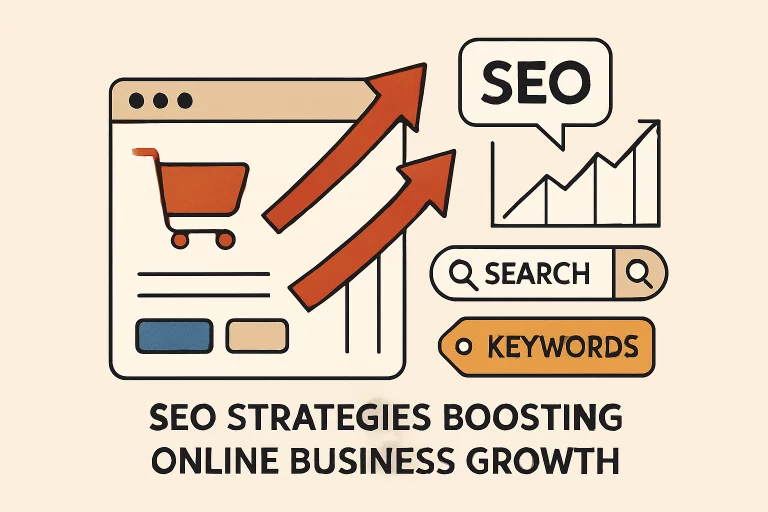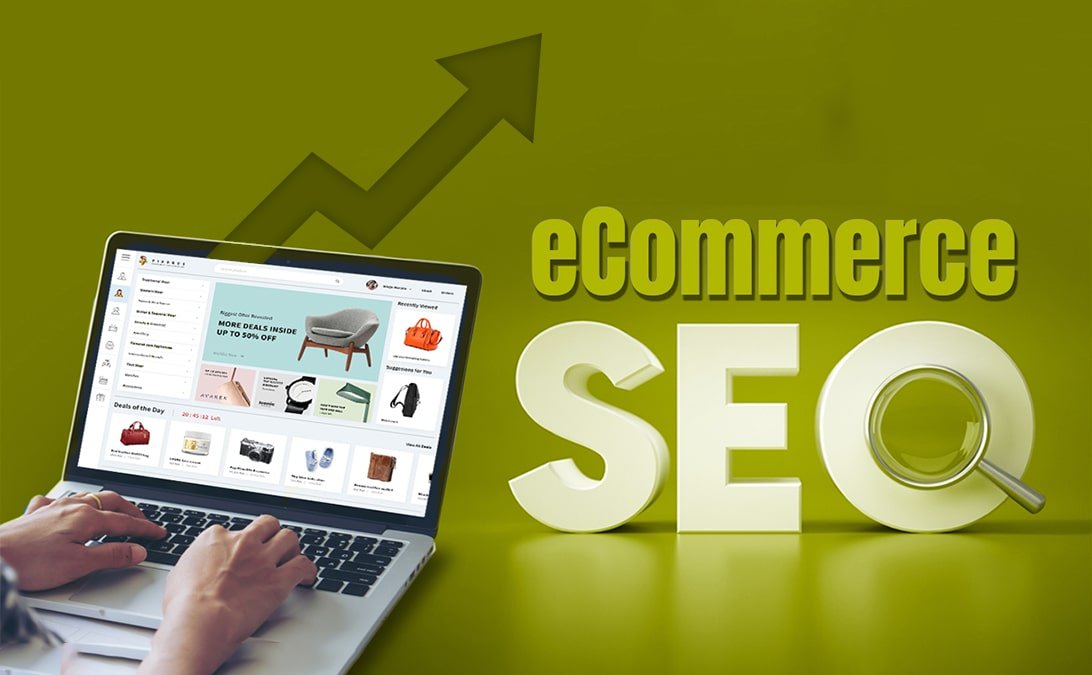Importance of SEO in E-commerce
In today’s fast-paced digital world, the e-commerce landscape is more crowded and competitive than ever before. Businesses seeking not just to survive but to thrive must focus on visibility, ensuring that potential customers find them before finding their competitors. Search Engine Optimization (SEO) is one of the most reliable and sustainable methods to achieve this. Instead of solely relying on paid advertising, which can quickly become costly, SEO provides a way to naturally attract a steady stream of users who are actively searching for your products. In fact, industry studies show that organic search is responsible for more than 40% of all e-commerce revenue. This demonstrates the power of organic visibility not only in driving traffic but in generating real, profitable returns. For companies looking to gain a serious edge, aligning with an ecommerce SEO agency can deliver thoroughly customized and effective campaigns tailored to unique business needs and growth stages.
Partnering with SEO experts means tapping into a wealth of knowledge about how search engines work and how buyers behave. Professional SEO services facilitate better rankings on key search terms, drive more targeted visitors, and establish your business as a credible, trustworthy option in your market. Since organic channels typically generate the most qualified leads and highest conversion rates, investing in a well-rounded SEO strategy can be one of the most cost-effective ways to scale growth and profitability, especially in the long term.
Conducting Effective Keyword Research
The foundation of every winning SEO strategy begins with comprehensive and precise keyword research. Understanding what potential customers are searching for—and how they express those needs—unlocks the ability to optimize your content and product offerings accordingly. It’s crucial to look beyond generic keywords and dig into long-tail queries, which are more specific and often reflect higher purchase intent. For example, “biodegradable kitchen sponges” tends to attract more motivated buyers and faces less competition than a broad term like “kitchen sponges.” Targeting these long-tail phrases not only positions your site to capture valuable traffic but also increases the chances of converting that traffic into sales quickly.
To maximize keyword efficacy, leverage specialized tools such as Google Keyword Planner, Ahrefs, or SEMrush. These platforms provide insight into search volume trends, competition levels, and related phrases that might otherwise be overlooked. When mapping keywords to your website, ensure that both primary and secondary keywords are distributed across product categories, descriptions, blog posts, and FAQ sections. This comprehensive approach ensures that every part of your site is discoverable and meets users at various points in their buying journey, making your e-commerce business the go-to resource in its niche.
On-Page SEO Techniques
On-page SEO revolves around refining every element of your website’s pages to ensure optimal visibility in search engine results and a seamless experience for visitors. For e-commerce operations, this means writing clear, compelling, and keyword-focused product titles, meta descriptions, and headers. Each product page should be unique—duplicate content dilutes ranking opportunities. Incorporate high-resolution images that feature descriptive alt text, contributing not only to accessibility but also enhancing your site’s SEO through visual search and better image indexing.
Structured Data & Enhanced Listings
Utilizing structured data, particularly schema.org product markup, transforms your listings in search results by qualifying them for rich snippets. These snippets can include details such as prices, in-stock status, and star ratings, dramatically boosting your click-through rates by providing essential information directly to users within the search page. Enhanced visibility in search results fosters trust and often prompts higher engagement rates.
User Experience Considerations
It’s essential to establish a logical internal linking structure and utilize clear, keyword-rich headlines for effective content organization. An intuitive URL architecture helps both users and search engines to navigate the site easily, find meaningful content, and understand the hierarchy of your pages. Each of these on-page enhancements contributes to higher rankings and a more satisfying, conversion-friendly shopping experience.

Technical SEO Best Practices
Technical SEO forms the backbone of a dependable, high-performing e-commerce site. A crucial aspect is ensuring seamless mobile usability, as mobile commerce continues to grow and now dominates the e-commerce ecosystem. Google’s mobile-first indexing prioritizes sites that offer responsive, easy-to-navigate mobile experiences, making mobile optimization critical for SEO success. Refer to this detailed technical SEO checklist to confirm your site is fully optimized for all devices and screen sizes.
Another key technical factor is page speed. E-commerce sites that load in two seconds or less enjoy higher conversion rates, while slow sites risk losing impatient shoppers and suffering lower rankings. Free tools like Google PageSpeed Insights and GTMetrix offer practical suggestions for reducing load times, including image compression and script optimization. Additionally, maintaining HTTPS security, establishing a clean site architecture, and properly handling canonical tags to manage duplicate content are fundamental for protecting SEO value and user trust.
Building High-Quality Backlinks
Backlinks remain one of Google’s top ranking signals and a cornerstone of any authority-building strategy. When reputable websites link to your e-commerce site, they send strong signals of credibility and trustworthiness to search engines—and to potential customers. Proactive backlink strategies include writing guest blogs for industry-leading sites, collaborating on content with partners, and working with influencers or reviewers who can authentically spotlight your products.
These efforts not only boost rankings but also drive qualified referral traffic from relevant audiences. Over time, these organic mentions and inbound links create a valuable cycle of heightened visibility, increased brand exposure, and improved revenue opportunities for your business.
Content Marketing Integration
A successful e-commerce SEO strategy is bolstered by an ongoing commitment to high-quality content marketing. Informative articles, comprehensive buying guides, and detailed comparison posts offer significant value to buyers at all stages, enabling them to make informed decisions and establish trust in your brand. By anticipating common questions or challenges with troubleshooting resources, you establish yourself as an authority, making customers more likely to purchase from your store rather than competitors.
Consistently producing helpful, evergreen content draws new prospects while encouraging previous visitors to return for updates or new products. Keeping blogs and knowledge bases fresh with insights about current industry trends and new product offerings ensures that your content remains relevant in the eyes of both users and search engines, solidifying your business’s online presence over time.
Tracking and Analyzing SEO Performance
Success in SEO is not static—it demands regular tracking, measurement, and refinement. Utilize tools like Google Analytics and Google Search Console to gather in-depth data on organic traffic, keyword rankings, and goal completions. These platforms reveal valuable information about how users interact with your site, highlighting patterns like bounce rates, average session duration, and the most common entry and exit points.
By monitoring performance with these tools, you can identify what’s working, detect problem areas, and make strategic adjustments. This iterative approach ensures that your SEO efforts are always in alignment with changing search engine algorithms and evolving consumer behaviors, securing sustained growth for your e-commerce business.
Common SEO Pitfalls to Avoid
It’s easy to fall into common traps that can undermine even the best-laid SEO plans. One of the most damaging mistakes is keyword stuffing, where content becomes unnatural and hard to read, ultimately harming user experience and risking search engine penalties. Instead, focus on producing genuinely helpful, well-structured content that directly addresses user needs and search intent.
Failing to optimize for mobile devices is another critical misstep. With the majority of online purchases now occurring on smartphones and tablets, a non-responsive site instantly loses out on vast swathes of traffic and sales. E-commerce businesses must prioritize a responsive, quick-loading mobile experience to stay competitive.
Routine website maintenance is also often overlooked. Issues such as broken links, outdated plugins, and duplicate content can quietly erode your search engine performance. Schedule regular technical audits and swift fixes to keep your website healthy, user-friendly, and well-ranking.
By implementing comprehensive SEO strategies—from in-depth keyword research to technical optimization and content marketing—e-commerce businesses can outperform their competitors, attract highly targeted traffic, and achieve sustained growth. For those ready to scale even faster and smarter, leveraging expert services from a trusted e-commerce SEO agency delivers more profound expertise and competitive advantage, ensuring your place at the forefront of your industry.








